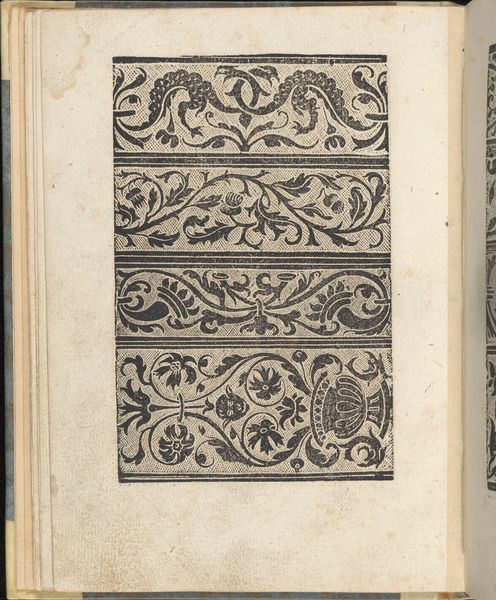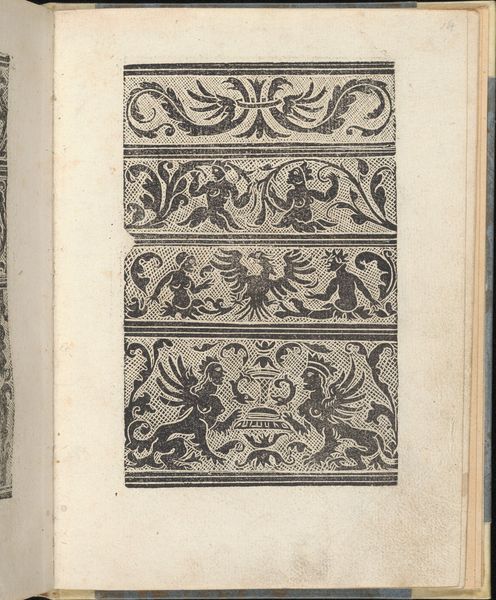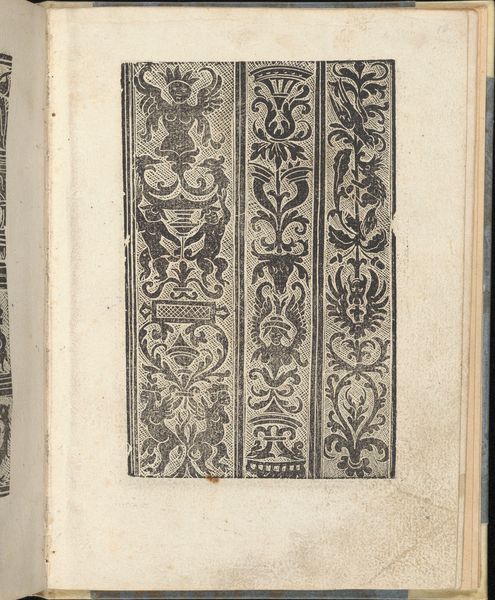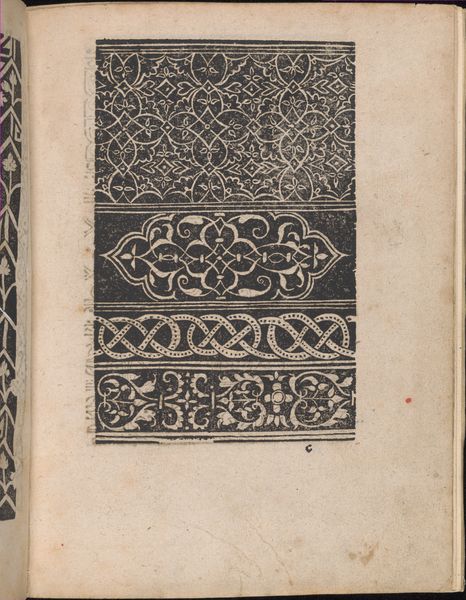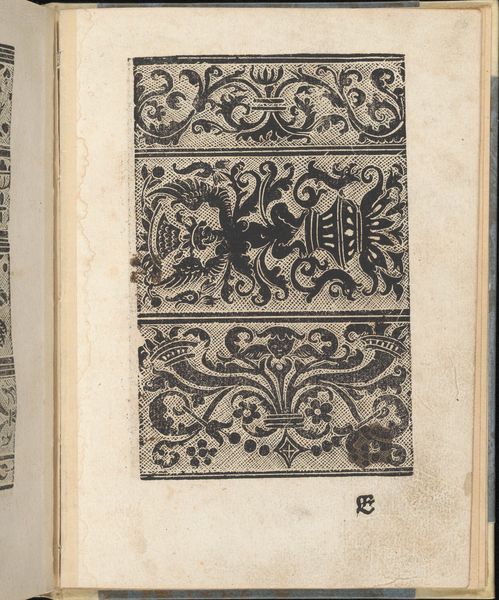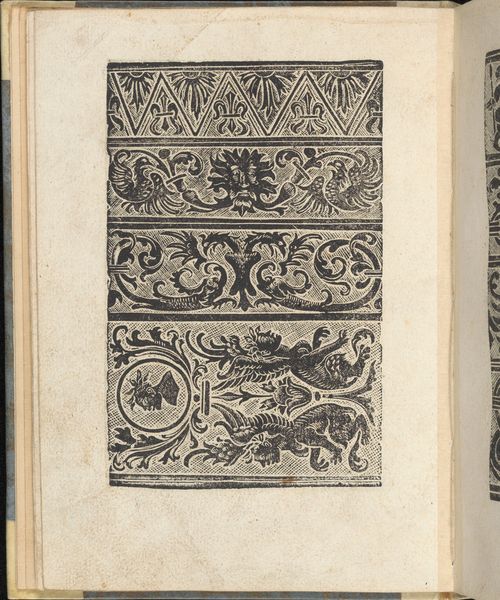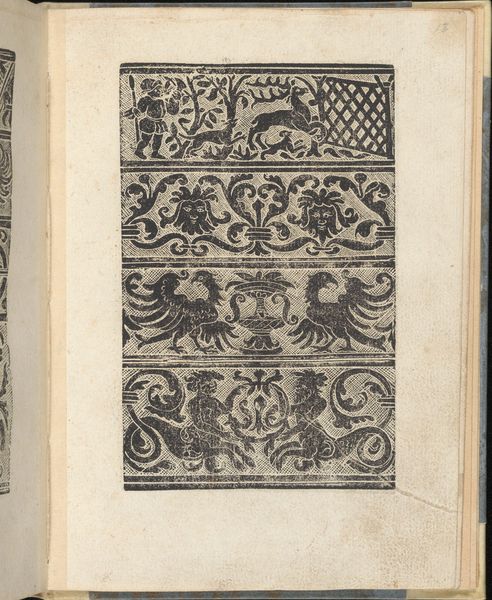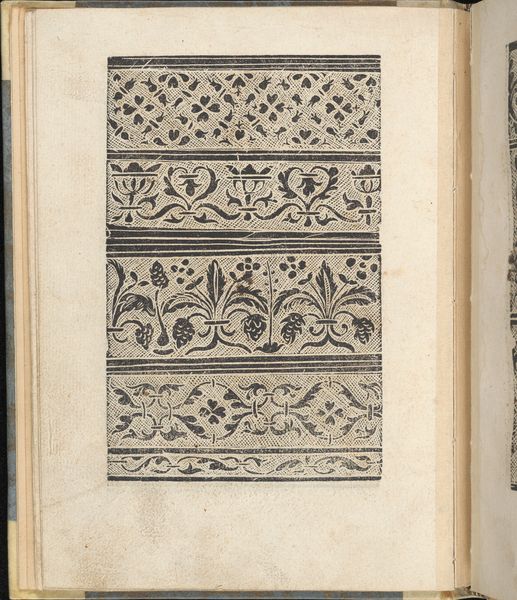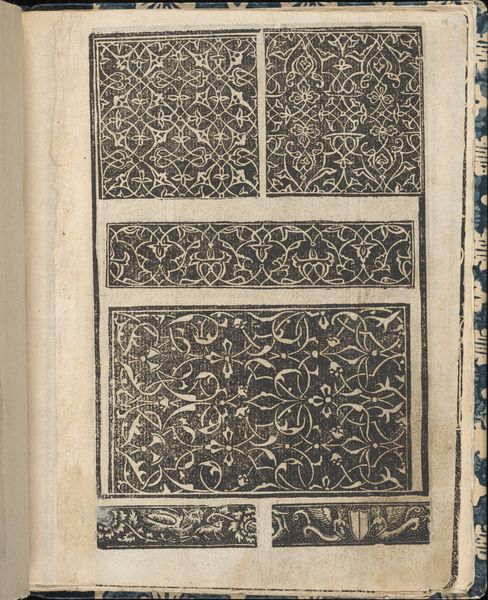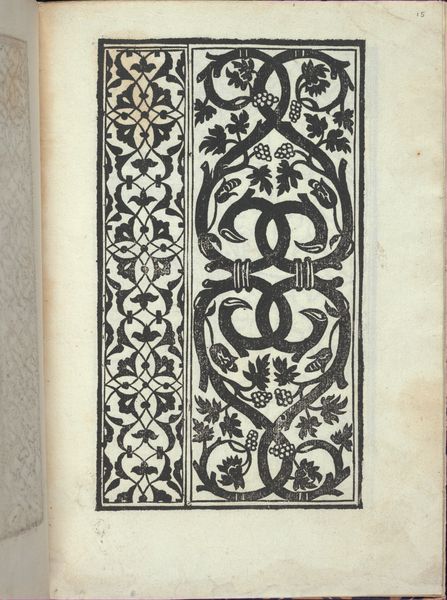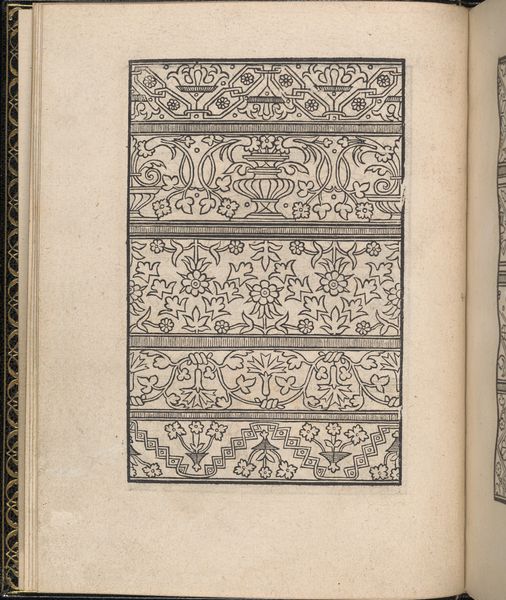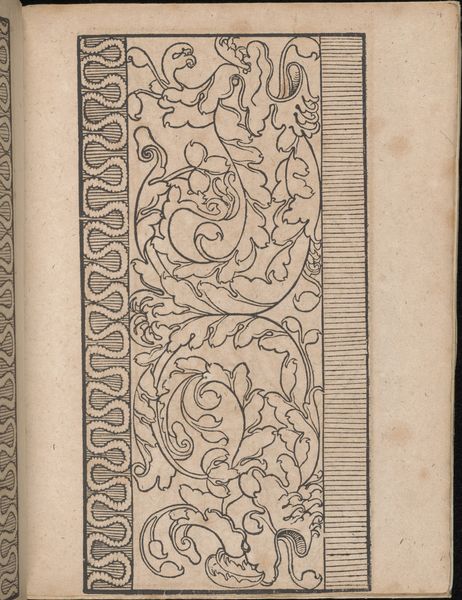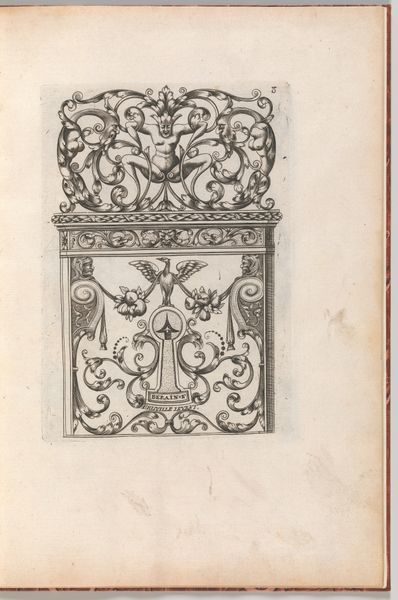
Ein ney Furmbüchlein, Page 2, recto 1520 - 1530
0:00
0:00
drawing, ornament, print, woodcut
#
drawing
#
ornament
#
medieval
# print
#
form
#
geometric
#
woodcut
#
line
#
early-renaissance
Dimensions: Sheet: 7 7/8 × 6 1/8 in. (20 × 15.5 cm)
Copyright: Public Domain
Editor: This is a page from "Ein ney Furmbüchlein," created by Johann Schönsperger the Younger between 1520 and 1530. It’s a woodcut print of ornamental designs. I find it amazing that even with this relatively simple medium, he’s created a lot of texture. What kind of symbols do you recognize? Curator: These aren't just ornaments; they’re a visual language deeply rooted in cultural memory. Look at the repeated motifs. Do you notice how classical elements, like the urns and acanthus leaves, are intertwined with what appears to be more Gothic sensibilities? The repetition of those elements calls forth continuity and visual rhyming, creating a psychological effect. Editor: That's interesting, because at first glance it seemed just decorative. How does it communicate something beyond decoration? Curator: Think about pattern books. This isn’t simply about filling space; it's about providing a vocabulary. A set of instructions to create works intended to evoke certain moods and affiliations. Note the use of line; it's not just a boundary but a defining characteristic, a carrier of meaning. What emotional responses do you have to that combination of nature and idealized forms? Editor: I guess there is this tension in my eye... almost a contrast between chaos and order, which makes me a bit anxious! Like it should be balanced, but isn't. Curator: Exactly! These are emotionally loaded forms, passed down through generations. Consider the audience - artisans learning how to signify power and prosperity. This page reflects the Renaissance fascination with antiquity while remaining firmly planted in the Northern European aesthetic. Editor: I see. So it's more about its function, its visual motifs carrying history and emotional intention, and less about whether I subjectively like it as a pattern. Thanks. Curator: Precisely. These repeating shapes carry significance beyond mere decoration. I am glad to know what the underlying message conveys to the audience.
Comments
No comments
Be the first to comment and join the conversation on the ultimate creative platform.
